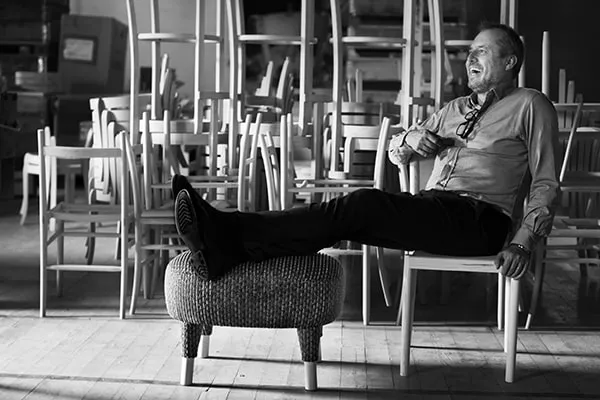Collaborative Conversation: Dag Klockby of Gärsnäs
This February, Bolon will reveal new innovations guaranteed to inspire the design of creative spaces. With a focus on new materials, we introduce you to a selection of furniture craftsmen specially chosen to experiment with Bolon’s new textiles. Choosing one of their iconic pieces, we learn how they were able to transform one of their furnishings using Bolon. Here is our second in a series of collaborative conversations.
Can you tell us a little about yourself and your background in the furniture industry?
My background in the business goes back to the late 70s, when I was employed at NK furniture in Gothenburg; the city where I was born. My passion for design and architecture is the main reason I am still in the industry. After studying economics and art, in 1983 I started working with Finnish furniture in Stockholm, at a company named Avarte and then was employed at Lammhults in Stockholm between 1986 and1988.
At the same time, I met my wife Anna Axelsson, the daughter of Professor Åke Axelsson. We started a company called Galleri Stolen in 1988. During the 90s, the company developed and we acquired a factory in Skirö in Småland, where we made our furniture designed by Åke Axelsson.
In 2003 we merged Galleri Stolen with Gärsnäs AB, which was then owned by Expanda, now Lammhult Design Group. The name Galleri Stolen ceased and instead we named the new company Gärsnäs AB.
Since the acquisition of Gärsnäs I became the CEO of the company. Our passion for design and design of furniture has over the years led to a radical renewal and modification of the original collection at Gärsnäs. In combination with Gärsnäs’ long and rich history, work has led us to success and a favourable growth. We currently have more than 50 employees and sales of approximately SEK 100 million in 2016.
When did you come in contact with BOLON for the first time?
My first contact with Bolon was in the early 2000s when I met Annica Eklund and her father, Lars Eklund. Afterwards we saw Bolon at various fairs, etc. Meetings with Bolon have always been positive and in my own interests, I’ve tried to follow and read about Bolon’s exciting development over the last 10-15 years.
How has your involvement been in this collaboration?
My involvement in this project with Bolon has been comprehensive and fairly active. From the beginning when we were asked by Annica if we wanted to be part of the project, I was excited and looked forward to collaborate with Bolon.
What is your experience with BOLON? How do you see BOLON as a company? What furniture type have you chosen to experiment with?
To me, Bolon is a company that in an exemplary manner has made an incredible journey from being a relative traditional company working with vinyl mats to a new level and dimension – all with the help of good design, clever marketing and entrepreneurship.
I feel Bolon today has a very strong brand well positioned in the international market, combining good design with social responsibility and a solid environmental performance. We have chosen to work with both our upholstered seating pallets, Elsa and Jac, designed by Emma Marga Blanche and Fredrik Färg. Furthermore, we experiment with our modular sofa PoP, design Pierre Sindre and Patrik Bengtsson. Last but not least, we are testing the material on our acclaimed 2016 armchair Hedwig, design David Ericsson.
How has it been to work with the material? Any difficulties? Any advantages?
The material is new for us and sets other requirements than traditional fabrics. Certain forms and complicated tapestry work is not suitable, certainly not with our current customers knowledge and experience. However, an advantage of the slightly heavier material is the fundamental quality, which replaces or is an alternative to leather or canvas. The challenge is to develop more knowledge and technology around the make-up of the material, and to possibly develop furniture that is intentionally suitable for the material, such as outdoor furniture, etc.
What are your thoughts about the final piece – now that BOLON materials have been used? How has it changed the piece?
The furniture has a different expression – similar to fashion and how what we wear affects our appearance. The colours and textures in the material are innovative, especially the combination of wool and vinyl. The material has a three-dimensional depth that feels different compared to conventional upholstery. The furniture has a bit more shine and luxury about it, and feels a little more haute couture.
What opportunities do you see BOLON materials could have in your production?
Some of our furniture can have a broader application. The material in combination with furniture can find new environments, like outdoor / indoor environments, and of course in hotel restaurants that require both beauty and rugged materials that withstand wear and are easy to maintain.
To see these custom creations, visit the Bolon exhibit during Stockholm Design Week, February 7-11 at Birger Jarlsgatan 32 A
![]()

